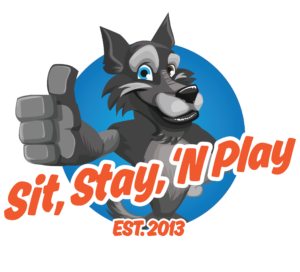Silent Companionship: The Joy of Owning and Communicating with a Deaf Dog
Have you ever wondered what it's like to bond with a dog who can't hear you? Bringing a dog into your life is an adventure filled with love, laughter, and a special bond that grows over time. But what happens when your new furry friend can’t hear you? For some, the idea of adopting a deaf dog may seem daunting. However, owning a deaf dog can be one of the most rewarding experiences imaginable. With patience, creativity, and a bit of extra love, you can forge a deep connection with your deaf dog that transcends words.
Deafness in dogs can be congenital (present at birth) or acquired later in life due to age, injury, or illness. Certain breeds, such as Dalmatians and Australian Shepherds, are more prone to congenital deafness. Despite this condition, deaf dogs are just as capable, intelligent, and loving as their hearing counterparts. They simply experience the world differently, relying more on sight and smell.
Are Deaf Dogs Disabled?
Are deaf dogs disabled? They don’t have to be. Deafness might limit a dog’s ability to hear, but it doesn’t have to limit their life experiences or capabilities. The key to unlocking their full potential lies in communication. By learning some sign language, you and your dog can not only communicate effectively but also create a lifelong bond that’s as strong as any between a hearing dog and their owner.

Through signing, your dog can learn basic obedience, and the possibilities don't stop there. Many deaf dogs excel in sports like Rodeo Dog, Agility, Rally, and Nosework. With communication, love, and patience, your journey with your deaf dog can be limitless and fun!
The Joys of Owning a Deaf Dog
1. Strengthening the Bond Through Non-Verbal Communication
One of the most profound joys of owning a deaf dog is the deep bond that forms through non-verbal communication. Without the ability to rely on verbal cues, you and your dog will learn to communicate through gestures, facial expressions, and body language. This type of communication often feels more intimate and intuitive, requiring you to be more attuned to each other’s signals.
Many deaf dog owners report feeling a stronger connection with their dogs because of the necessity to “listen” with their eyes and hearts, rather than their ears. This heightened awareness can lead to a more profound understanding of your dog’s needs, emotions, and personality.
2. Embracing Creativity in Training
Training a deaf dog can be an incredibly fulfilling experience. Instead of relying on verbal commands, you’ll use hand signals, visual cues, and touch to communicate with your dog. This encourages you to be creative and think outside the box.
For instance, instead of calling your dog’s name to get their attention, you might use a flashlight, a gentle tap on the shoulder to signal to your dog that you want their attention. Through consistent hand signals, your dog can learn basic obedience, and the two of you can explore more complex training and activities together.
3. The Beauty of Silent Companionship
One of the most beautiful aspects of owning a deaf dog is the silent companionship they offer. While they may not react to loud noises or bark in response to a doorbell, they provide a calm and peaceful presence in your life. Many deaf dog owners describe their homes as more serene, as their dogs are less likely to be startled by sudden sounds or engage in excessive barking.
This tranquility can be especially beneficial for individuals who prefer a quieter home environment or who live in close quarters with neighbors. The silent companionship of a deaf dog can bring a unique sense of peace and comfort to your life.
Communicating with Your Deaf Dog
1. Using Hand Signals
Hand signals are the primary means of communication with a deaf dog. These signals can range from simple gestures like a thumbs-up for a positive response to more complex signals for commands like “sit,” “stay,” or “come.” Consistency is key when using hand signals, as your dog will learn to associate specific gestures with certain actions or behaviors.
2. Incorporating Visual Cues and Body Language
In addition to hand signals, you can use visual cues and body language to communicate with your deaf dog. For example, making eye contact, smiling, or nodding can convey approval, while a raised hand or a step back can signal a boundary or command. Visual cues help create a structured routine that your dog can easily follow.
3. The Power of Touch
Touch is another powerful tool for communicating with your deaf dog. A gentle tap on the shoulder can be used to get your dog’s attention, while a soft stroke on the back can provide comfort and reassurance. Many deaf dogs enjoy physical contact and will seek out your touch as a form of communication and connection.
Helping Aging Dogs Adjust to Deafness
Dogs that go deaf due to the aging process may have a more challenging time adjusting because they do not understand what is happening to them. Unlike dogs born deaf, who naturally adapt to relying on other senses, senior dogs may become confused or anxious as their hearing fades. It’s important to be patient and supportive during this transition.
Gradually introducing hand signals, increasing physical touch, and maintaining consistent routines can help ease their anxiety. Communicating love and reassurance through gentle touch and clear visual cues can make the adjustment smoother for your aging dog.
Overcoming Challenges
Owning a deaf dog comes with unique challenges, but with patience and understanding, these challenges can be overcome. It’s important to remember that deaf dogs are not “disabled” but simply experience the world differently. By focusing on their strengths and finding creative solutions to communication, you can help your dog thrive.
In conclusion, owning a deaf dog is a journey that requires creativity, patience, and an open heart. While there are challenges to overcome, the rewards are immense. The unique bond you’ll form with your deaf dog, rooted in non-verbal communication and deep understanding, is a testament to the limitless potential of love and connection. By embracing the joys of owning a deaf dog, you’ll discover a world of silent companionship that speaks volumes.

